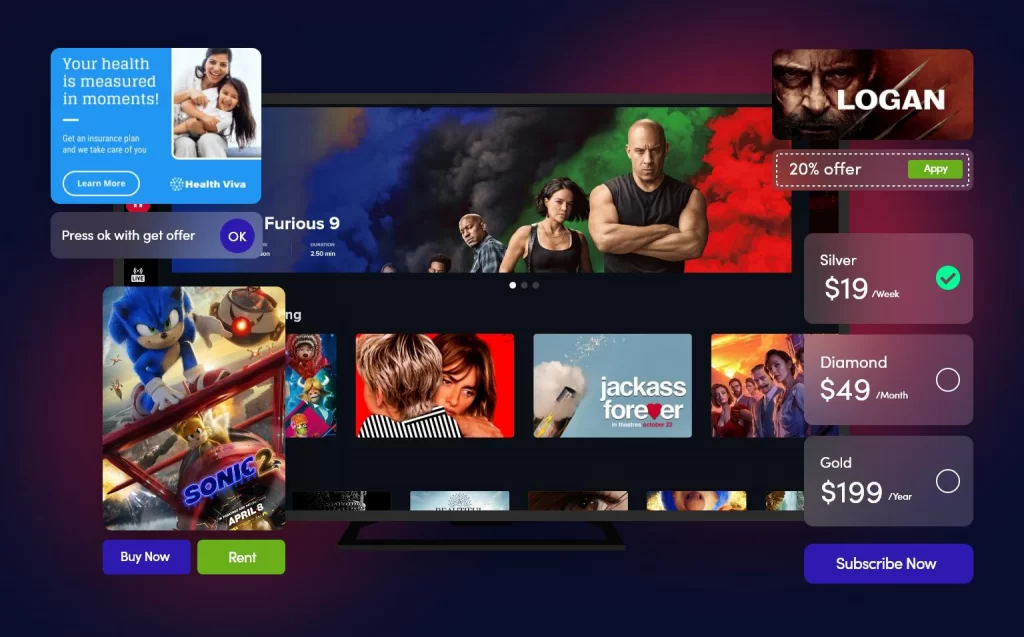How Apollo Group Tv can Save You Time, Stress, and Money.
How Apollo Group Tv can Save You Time, Stress, and Money.
Blog Article
Little Known Facts About Apollo Group Tv.
Table of ContentsSome Known Details About Apollo Group Tv Apollo Group Tv Can Be Fun For EveryoneOur Apollo Group Tv PDFsThe Ultimate Guide To Apollo Group Tv
In this circumstance, as opposed to having three-minute commercial areas during a 30-minute television program, TV programming might transform to one where a consumer will certainly be required to have a monthly membership, to ensure that they cen view targeted banner advertisements. This sort of advertising and marketing currently happens on the web, and the quantity of data tv firms gather allows them to do a lot the very same.Define the significant patterns amongst the broadcasting and cable networks. Popular radio shows such as police drama Dragnet and western cowboy collection Gunsmoke were adjusted for tv, and brand-new TV shows were funded by single advertisers, simply as radio programs had been.
Today, the television industry is far extra intricate. Programs are sponsored by multiple marketers; shows is managed by major media corporations; and the three significant networks no much longer dominate the airwaves however instead share their audiences with various cord networks. Several factors make up these patterns within the industry, consisting of technological growths, government regulations, and the production of new networks.

Apollo Group Tv Can Be Fun For Everyone
Also public tv has become subject to the impact of marketing. Established in 1969, (PBS) created out of a report by the Carnegie Payment on Educational Tv, which took a look at the role of instructional, noncommercial television on society. The record recommended that the federal government financing public television in order to give diversity of programming throughout the network eraa service created "not to market items" but to "boost citizenship and civil service (McCauley, 2003)." Public tv was likewise planned to give global accessibility to tv for viewers in backwoods or audiences who could not afford to spend for private television services.
The period in between 1950 and 1970 is historically identified as the. Other than a tiny portion of airtime regulated by public television, the 3 significant networks (known as the Big Three) dominated the tv sector, jointly accounting for greater than 95 percent of prime-time viewing. In 1986, Rupert Murdoch, the head of multinational business Information Corp, launched the Fox network, challenging the supremacy of the Big 3.
Targeting young and minority target markets with programs such as Buffy the Vampire Slayer, Moesha, Dawson's Creek, and The Wayans Bros., the new networks wished to draw stations away from their old network associations. Nonetheless, instead than repeating the success of Fox, UPN and WB struggled to make an effect. Not able to draw in several affiliate stations, the 2 recently established networks reached less households than their bigger competitors because they were unobtainable in some smaller cities.
This decision led the way for the advancement of cord motion picture channels, contributing to the rapid development of cord in the 1980s and 1990s. apollo tv group. More deregulation of cable television in the 1984 Cable Communications Policy Act removed restrictions on wire prices, making it possible for drivers to charge what they wanted for cord services as long as there worked competition to the service (a standard that over 90 percent of all wire markets can satisfy)
Apollo Group Tv - Truths

Having created the first "superstation," Turner increased his realm by establishing 24-hour information network CNN in 1980. At the end of the year, 28 national shows solutions were available, and the cord change had actually started. Over the following decade, the industry went through a duration of quick development and appeal, and by 1994 viewers could select from 94 standard and 20 costs cable services.
Figure 9 - https://www.goodreads.com/user/show/182771924-vick-boyd.16 site web Boosted competition from wire channels has actually triggered a steady decrease in the networks' target market ratings. During the 1950s, the cost of creating a single tv show raised as programs became much longer and manufacturing expenses soared. Sponsorship on network tv shifted from single sponsorship, in which a program was totally sustained and produced by one advertiser, to numerous sponsorship, in which advertisers purchased 1- or 2-minute places on the show
Each action must be a minimum of one paragraph. Choose one of the Big 4 networks and print out its once a week programs timetable. Watch the network's prime-time programs over the program of a week, keeping in mind the target group for every show. Observe the marketing sponsors that sustain each program and compare just how the products and services fit with the intended target market.
Little Known Questions About Apollo Group Tv.

Straight TV, often described as standard broadcast television, encompasses cable and satellite television. It's called "linear" since content complies with an established programs timetable, unlike on-demand web content which the individual audience chooses to see based upon their very own choices and timetable. So, when you ask, "What is linear TV?", think of it as the classic way of watching TV that has actually been around for years.
Report this page